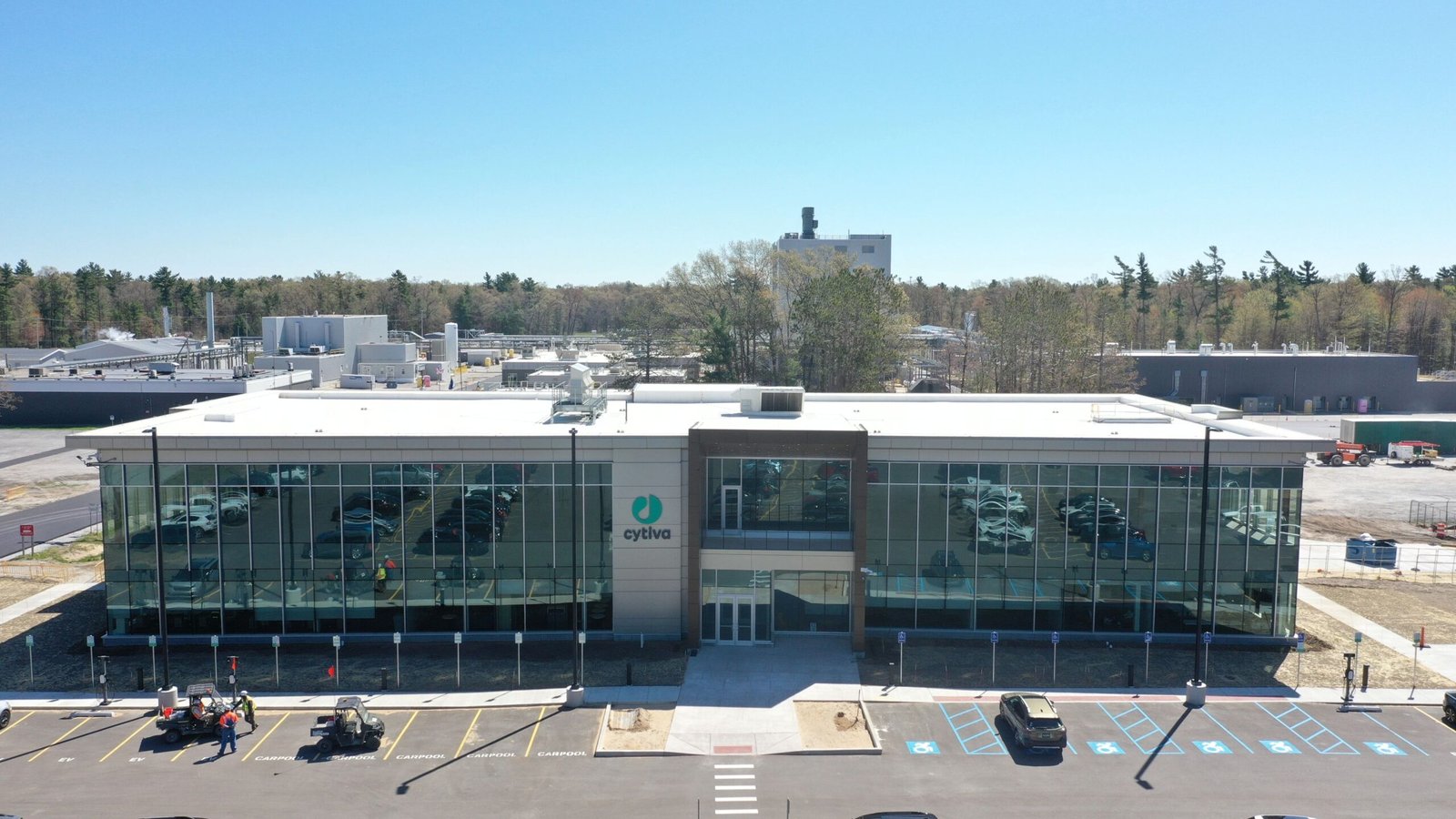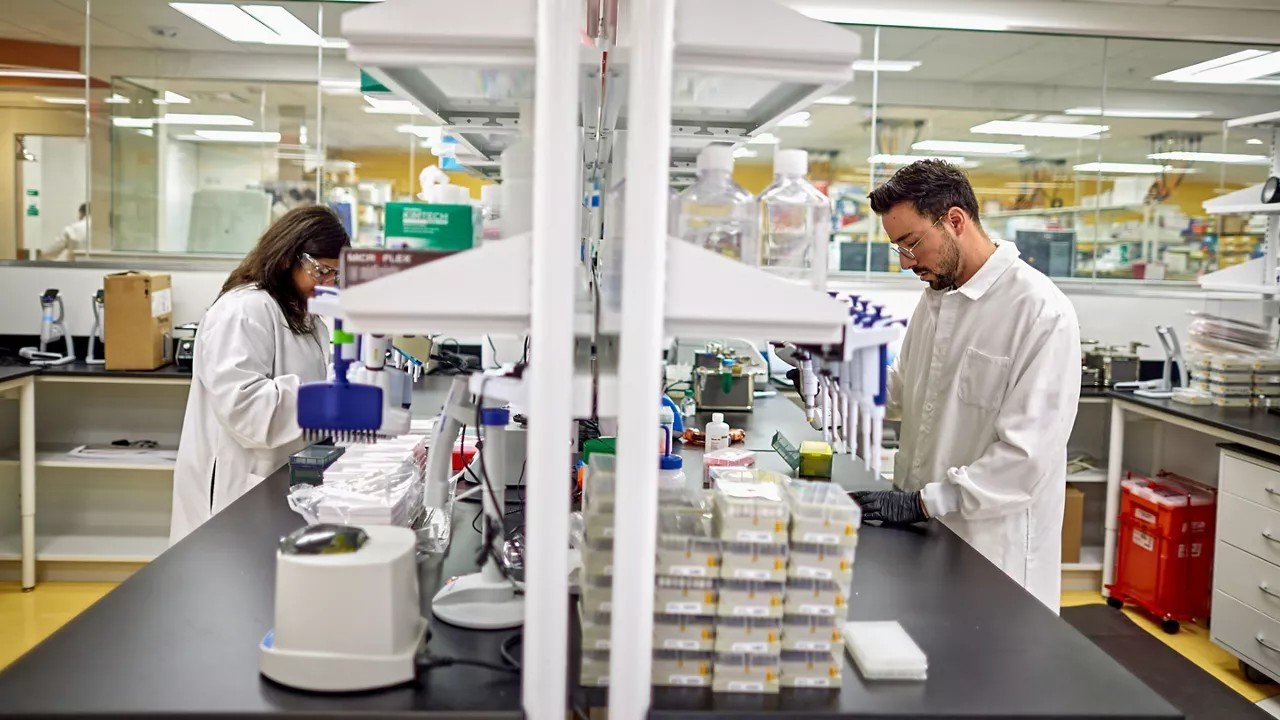Cytiva is planning for a busy second half as it completes and builds out a combined $1.6 billion in expansion projects worldwide, across the United States, Europe, and Asia, all to meet growing market demand for its services from developers and manufacturers of advanced therapeutics.
Two of Cytiva’s top executives recently offered updates on the expansion projects and other initiatives announced since last summer, while a third highlighted the company’s approaches to helping customers navigate regulatory and compliance changes.
Pierre-Alain Ruffieux, Cytiva’s COO, and Emmanuel Abate, the company’s president, genomic medicine, told GEN Edge the expansion projects reflected Cytiva’s ongoing effort to satisfy customer demand for manufacturing tools and services usable within their regions of the world. Those projects, Ruffieux and Abate emphasized, were not responses to growing advocacy by both President Donald Trump and European Union leaders for increased biopharma manufacturing within their borders.
“By producing in-region, for-region, you have multiple advantages,” Ruffieux said in an interview during the recent Biotechnology Innovation Organization (BIO) International Convention in Boston. “First of all, you can serve your customers faster, which is the name of the game for many of our customers. Second, it’s very good for sustainability. Many of our customers are asking for a lower carbon footprint, so when you produce region for region, you have a better sustainability footprint. And third, you avoid any type of resilience issues, which could be a supply chain restriction, which could be tariffs, or which could be anything else.”
Added Abate: “We didn’t wait to actually invest or expand our manufacturing capacity in the United States. We’ve always invested in the United States and we continue to do so.”
Based in Marlborough, MA, Cytiva is a unit of Danaher that was re-launched in 2020 after Danaher spent $21.4 billion for the former biopharma business of GE Healthcare Life Sciences. Danaher oversees a global family of more than 20 operating companies focused on biotech and life sciences, as well as diagnostics, water quality, and product identification.
Long-term growth plan
Cytiva develops technologies and services that help advance and accelerate the development and manufacture of therapeutics. As part of a long-term growth plan, Cytiva has invested $1.6 billion since 2019 toward projects intended to satisfy growing customer demand.
Those investments include projects slated for completion in the second half of this year:
- Duncan, SC: By year’s end, Cytiva expects to complete the doubling of its manufacturing capacity by building out a single-use technology manufacturing site initially conceived for sister company Pall, also owned by Danaher. “The vast majority of the work is done,” Ruffieux said.
- Fajardo, Puerto Rico: The company is finishing work to boost by 33% its filtration manufacturing capacity through upgrades and expansion also expected to be finished by year’s end.
- Pensacola, FL: Cytiva expects by August to complete the construction of new filtration manufacturing lines designed to increase the site’s production capacity for filter membranes for North America by 20%, in an expansion of an existing facility.
In Pensacola, filtration membranes that require customization for customers will be made available from that facility faster, with customer wait times shrinking as a result, according to Cytiva.
The most popular products ordered from the site by biomanufacturing customers, such as standard-sized bags, will be stocked “on-the-shelf,” ready for immediate delivery.
Those projects join three others that are in progress and set to be completed over the next three years:
- Songdo, Incheon, South Korea: Cytiva intends to satisfy increased demand for high-quality filtration solutions in the Asia-Pacific region by starting filtration manufacturing at its Innovation Hub in 2026. The Hub, which opened in 2024, encompasses a manufacturing facility and customer experience lab.
- Logan, UT: Cytiva plans to complete an additional 73,850 square feet of further expansion space in 2026. “It’s all for support of making cell culture medium, both large volume powder and the smaller volume liquid,” Ruffieux said. Cytiva has completed expanding its dry powder and liquid media manufacturing capacity for large-volume customers and added high-speed bottle filling for smaller-volume users. The company has also opened an expanded staging area for finished goods and a new centralized 10,000-square-foot quality control lab to support increased manufacturing.
- Muskegon, MI: Cytiva is constructing a second resins manufacturing facility at a site that now employs approximately 100 full-time associates. That number is expected to double by the time the second plant becomes fully operational, which is expected to occur by the end of 2028.
Completed projects
Another four Cytiva expansion projects have already been completed, including:
- Beijing: Cytiva partnered with Wego Pharmaceutical in 2021 to expand an existing facility the companies jointly launched three years earlier, by bringing online three new manufacturing lines, tripling the site’s supply capacity of single-use consumables for Asia-Pacific.
- Ilfracombe, Devon, U.K.: The company has expanded its filtration device manufacturing capacity by 81%, and built community goodwill in February by donating £10,000 ($13,743) to the Royal National Lifeboat Institution, a charity whose volunteers provide a 24-hour search and rescue service around the U.K. and Ireland coasts.
- Medemblik, The Netherlands: Cytiva has sustained manufacturing capacity for single-use bags.
- Uppsala, Sweden: Cytiva has approximately doubled its manufacturing capacity for chromatography resins by adding new factories, new equipment, improved automation capabilities, and a new tank farm for solvent storage. The Uppsala expansion is designed to support customers with short-term emergency needs.
“Chromatography is growing because we are serving our customers who are producing monoclonal antibodies, vaccines, new therapies, and advanced therapies,” Abate said.
Uppsala is an example, Ruffieux said, of Cytiva carrying out continuous improvement through the Danaher Business System (DBS) practiced by Cytiva and other Danaher-owned companies. Since the mid-1980s, Danaher has carried out an ongoing company-wide Kaizen or continuous improvement effort based on lean manufacturing and anchored on DBS, a common culture and operating system focused on people, plans, processes, and performance.
Through DBS, Ruffieux explained, Cytiva can direct new investment to improve its production capabilities, for the benefit of the company and its customers.
“Every time you make an investment, you try to bring new technologies which allow you to produce the same component with better cycle time, and at a lower cost,” he added.
Cytiva in April joined with synthetic bio company Asimov to partner on an integrated offering for optimized biologics production. The collaboration will combine Asimov’s CHO Edge cell line development platform and Cytiva’s HyClone media and feed solutions, along with Cytiva’s Fast Trak
media and feed solutions, along with Cytiva’s Fast Trak process development services.
process development services.
“We are at the early stage, but I think it’s really interesting to bring our expertise in cell culture media and in cell line development with Asimov’s expertise, specifically on the tool they’re using to make better cell lines,” Ruffieux said. “To be successful in this industry, collaborations are key, and we are very excited with this collaboration.”
Other investments by Cytiva have focused on its Sefia next-generation manufacturing platform, designed as a flexible, modular cell therapy manufacturing platform offering greater automation than previous cell therapy platforms, thus lowering the potential for human error in manufacturing the treatments. The company is preparing later this year to launch the second, downstream-focused expansion phase of Sefia, having brought the upstream portion, the cell isolation module, last year.
Accelerating cell therapy production
Launched during BIO 2024, Sefia is designed to help drug developers and larger healthcare providers accelerate their production of chimeric antigen receptor T (CAR T) cell therapies and other cell-based treatments, at lower cost. Kite, a Gilead company, partnered with Cytiva to develop Sefia through a collaboration that combined Cytiva’s R&D and manufacturing expertise with Kite’s experience as the developer of two leading CAR T therapies, Yescarta® (axicabtagene ciloleucel) and Tecartus® (brexucabtagene autoleucel).
“The demand for CAR T continues to see traction and success with patients, which is of course great news, and the demand for a more automated system that helps customers who work in a closed environment reduce their costs continues to be really strong. So, I will continue to be really optimistic about the space and the potential for the product, absolutely,” Abate said.
Also during the second half of this year, Cytiva plans to release a new version of its Global Biopharma Resilience Index, the company’s biennial deep-dive analysis of biopharma’s performance across five key pillars: supply chain resilience, talent pool, R&D ecosystem, manufacturing agility, and government policy and regulation.
Cytiva’s most recent Index, published in 2023, urged countries to boost the resilience of their biopharma industries by:
- Developing a long-term roadmap designed to align their policies with their biopharma regulations.
- Bridging the gap between developed and emerging national economies.
- Increasing training, upskilling, and retention of biopharma talent.
- Carrying out targeted investment in digitalization platforms enabling continuous manufacturing for biologics.
- Learning from the biopharma investment models of leading countries.
July 1 will mark one year since Ruffieux took office as Cytiva’s COO, where he oversees Cytiva’s global operations and supply chain, which as of last year processed an average of 30,000 orders per month, providing customers with technologies and services across more than 80 countries.
A chemical engineer by training with MSc and PhD degrees from the Swiss Institute of Technology in Lausanne, Ruffieux joined the company from Lonza Group, a customer of Cytiva, which he oversaw as CEO from 2020–23, navigating GEN’s top-ranked contract development and manufacturing organization successfully through the COVID-19 pandemic. Earlier, Ruffieux served as head of global pharma technical operations at Roche, where he was responsible for pharmaceutical commercial manufacturing and supply chain operations.
What attracted him to Cytiva, and kept him enjoying his tenure there? Ruffieux cited three factors: The presence of a quality staff; the opportunity to develop products well regarded within biopharma; and the opportunity to apply DBS.
“Cytiva offered a unique, unique opportunity to stay in the same industry and to work with very exciting products which have a huge impact in the industry. I enjoy that a lot,” Ruffieux said.
Compliance head: “We need to keep that big picture” on drug development amid regulatory changes
Angela Johnson, PhD, RAC, CPGP, senior managing director and head of global regulatory and compliance with Cytiva, shared during a recent panel discussion how the large number of regulatory changes that drug manufacturers need to know and comply with pose key challenges to successful drug development.
“There’s a breadth of changes. They’re not all big changes: They’re material changes, they’re deforestation, they’re sustainability. There are changes in our software data standards, our interoperability of data formats—small changes individually, but there are so many of them happening right now that we need to be compliant with,” Johnson said during “Regulatory Acceleration & Innovation: Leveraging New Policies for a Smarter Biopharma Go-to-Market Strategy,” a panel talk held during BIO.
“We need to keep that big picture on how do we accelerate? How do we do the right thing for patients? How do we not let cell and gene therapy, RNA therapy, computational drug development, be stalled out by all those different changes?” she advised.
Biomanufacturers need to know where drug developers, both small or large, are feeling regulatory pain, and how they can address those challenges, Johnson said, with the goal of gaining regulatory buy-in for innovative new processes.
“It’s really unique how we’ve been able to work with so many different strategic regulatory groups that will approach the agency with things that are not traditional approaches necessarily, and get that buy-in from a conversation, a scientific conversation between scientists understanding technologies on how we’re going to do things the better way, the right way to enabling these new technologies? I think just the depth and breadth of those talks is outstanding right now,” Johnson observed.
She cited a survey of biopharma manufacturers showing that nearly half of respondents (48.7%) viewed regulatory changes as “on the top of my radar as an opportunity for disruption/change.”
Drug developers can build trust with regulators and other stakeholders by taking the risk of opening up early in their development journeys about the challenges they face in innovation.
“Do we actually do ourselves a favor by not starting the conversation, building the trust right from the get-go? That trust is not one point in time. It’s something to build this credibility over months or years of development, and that’s what’s going to enable you to have success programmatically, whether you’re talking about with FDA or with regulatory authorities, with your suppliers, and with your academic partners,” Johnson said.
Joining Johnson on the panel were Danielle Corwin, PhD, MWC, chief of staff, regulatory strategy and business excellence, global regulatory affairs, specialty care, Sanofi; Bassem Gayed, PhD, senior director, cell therapy technical operation, Bristol Myers Squibb; and Randall N. Hyer, MD, CEO of Merlin Biotech. The panel’s moderator was Michael Ryskin, managing director, life science tools & diagnostics, animal health, BofA Securities.
The post “In-Region, For Region”: Cytiva Builds Out $1.6B in Global Expansion Projects appeared first on GEN – Genetic Engineering and Biotechnology News.




